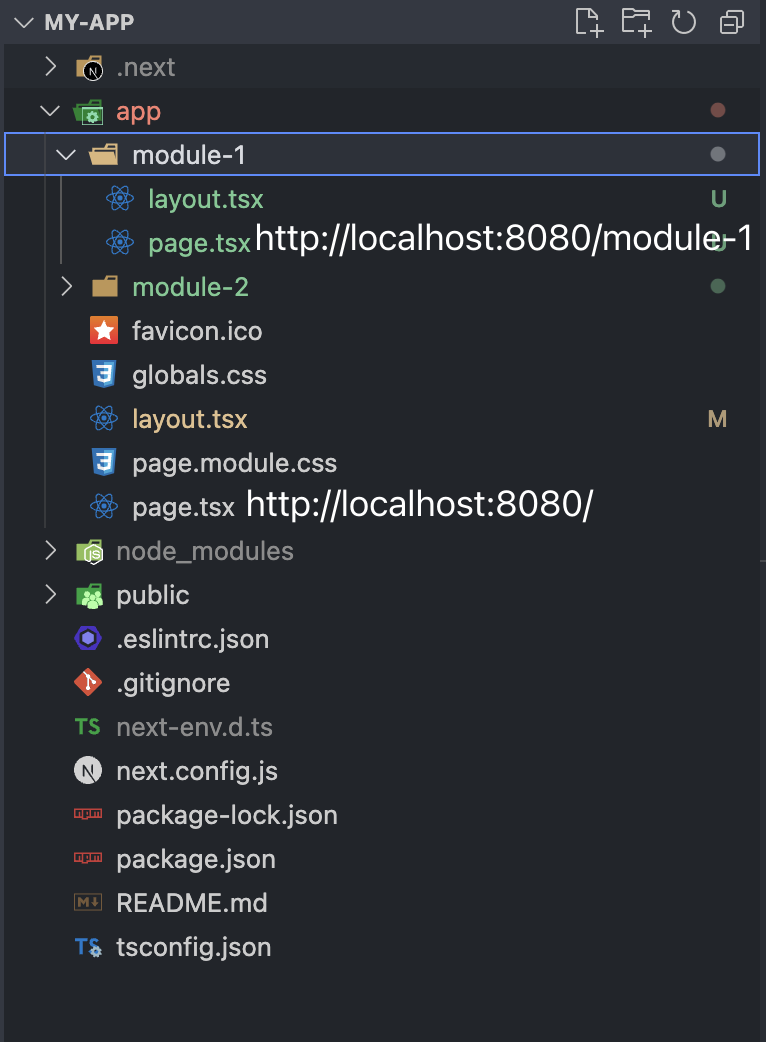《Next.js Hello World》之文件夹结构与路由基础
Next.js 文件夹结构与路由基础
本篇介绍Next的文件夹结构以及Next.js的路由系统
Next.js 文件夹基本结构

对应的Tree命令结构如下:
.
├── favicon.ico
├── globals.css # 全局样式
├── layout.tsx # 全局layout
├── module-1 # 模块-1
│ ├── layout.tsx # 模块-1的layout
│ └── page.tsx # 模块-1的页面入口文件,访问方式 http://localhost:8080/module-1
├── module-2
│ └── page.tsx # 模块-2的页面入口文件,访问方式 http://localhost:8080/module-2
├── page.module.css
└── page.tsx # 项目首页,访问方式 http://localhost:8080
Next.js 与 Umi.js 类似使用的是文件夹为路由系统。每个模块都会有一个模块的布局文件layout.tsx,页面路口文件的协定是文件夹下的page.tsx
页面间的导航
在React技术链中我们常见的路由导航形式是:封装的导航组件、Hooks导航API、最基本的JS路由变更
标签组件导航
Next.js中有默认的模块Link,类似与HTML标签中的a标签,通过href来进行路由跳转
import Link from "next/link";
export default function Model1(){
return <main>
<div>Model1</div>
<Link href='/module-2'>
点击跳转module-2
</Link>
</main>
}
Hooks导航
使用 useRouter的能力来进行导航
'use client'
import { useRouter } from "next/navigation";
import { useCallback } from "react";
export const useModulePath = () => {
const path = '/module-2';
const router = useRouter();
const goToModule2 = useCallback(() => {
router.push(path)
}, [router]);
return { goToModule2 };
}
export const Button = () => {
const { goToModule2 } = useModulePath()
return <button onClick={goToModule2} >Hooks 导航--点击跳转module-2</button>
}
- 页面间的导航
- 标签组件导航
- Hooks导航